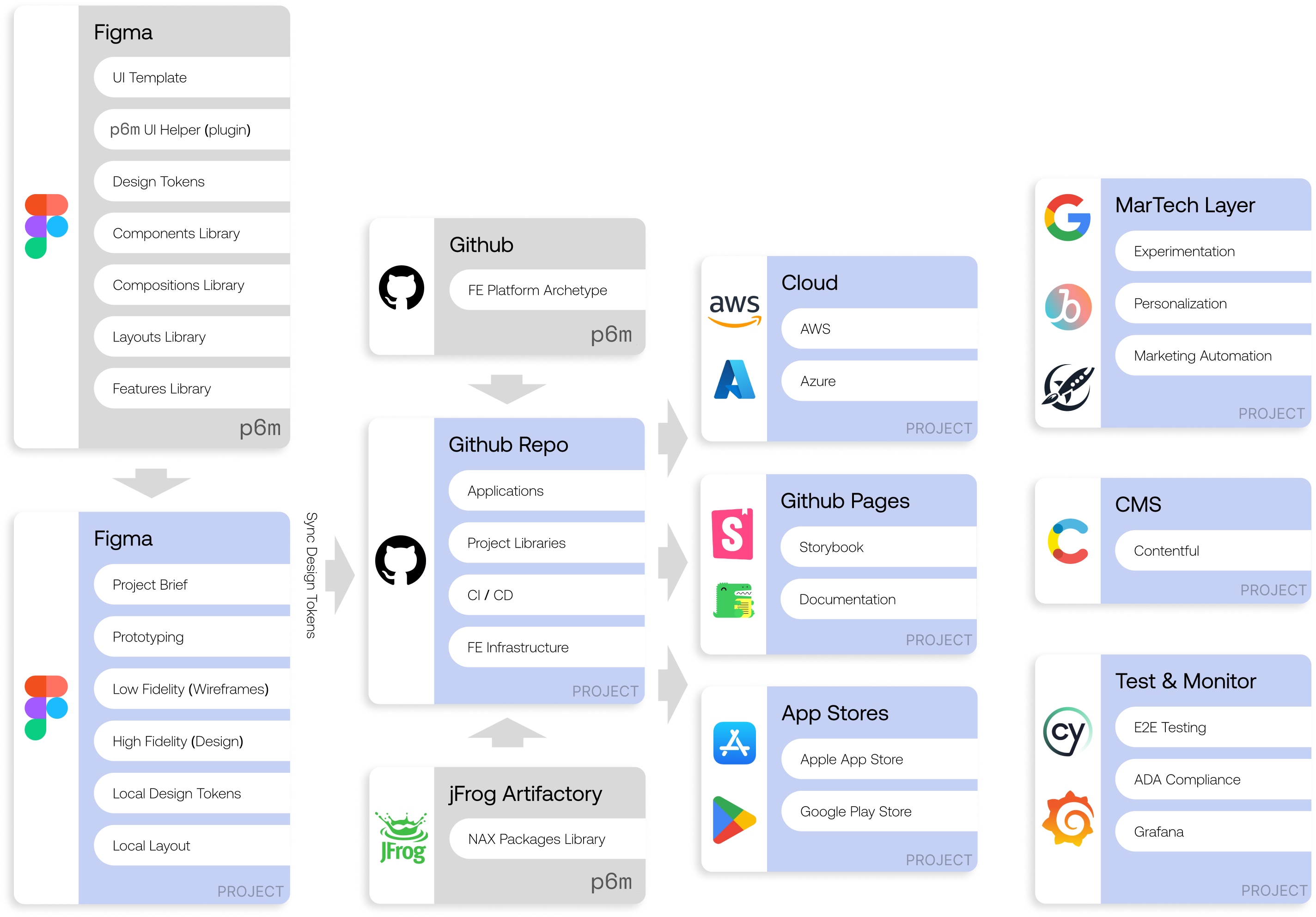Frontend Applications
The platform provides a streamlined frontend development workflow; integrating design, development, deployment, and monitoring tools to create a cohesive process for delivering high-quality web and mobile applications. Each component plays a specific role in ensuring efficiency, scalability, and maintainability in frontend development.
Frontend Architecture

Design Phase with Figma
The design process starts with Figma, a powerful design and prototyping tool, used for:
- UI Templates and Libraries: Includes pre-defined design tokens, component libraries, layout structures, and feature repositories for reuse.
- Project Brief and Prototyping: Collaborative ideation and prototyping ensure alignment across teams.
- Wireframes and High-Fidelity Designs: Enables teams to create low-fidelity wireframes and transform them into polished, high-fidelity designs.
- Design Tokens: Ensures design tokens are consistent and accessible across projects.
Figma serves as the foundation for visual design and collaboration, bridging the gap between design and development.
Development with GitHub and JFrog Artifactory
The design outputs are handed off to developers via integration with GitHub repositories, which include:
- Component Libraries: Houses project-specific code and reusable libraries.
- CI/CD Pipelines: Automated workflows for building, testing, and deploying code.
- FrontEnd Infrastructure (FE): Ensures scalable and efficient architecture.
Artifact Management (e.g. JFrog) integrates with GitHub to store reusable packages, such as libraries and dependencies, streamlining project management.
Deployment and Hosting
The deployment process is managed using the following platforms:
- Cloud Providers (AWS, Azure): Host and scale frontend applications.
- GitHub Pages: Documentation and storybook tools for developer collaboration and knowledge sharing.
- App Stores (Apple, Google): Distribution of mobile apps to end users.
These platforms ensure accessibility, scalability, and a seamless user experience.
Marketing and Content Integration
For dynamic content and personalized user experiences:
- CMS (Contentful): Manages website and app content.
- MarTech Layer: Includes tools for experimentation, personalization, and marketing automation to enhance user engagement.
Testing and Monitoring
To ensure robust applications, testing and monitoring tools include:
- End-to-End Testing (Cypress): Automated testing of workflows to ensure reliability.
- ADA Compliance Tools: Ensures applications are accessible to all users.
- Monitoring (e.g. Grafana): Tracks application performance and detects issues early.